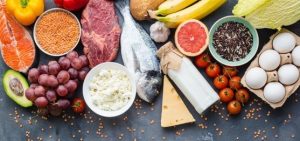Our Top Tips To Help You To Fortify Texture Modified Meals For People You Support With Dysphagia To Prevent Malnutrition
In our latest educational article we address the challenge of the links between people living with Dysphagia and the heightened risk of malnutrition and specifically answer the question recently posed to us how can we fortify meals to ensure that the people we support’s daily food intake meets daily dietary requirements.
Jo Bonser MD told us:
‘We absolutely understand that supporting ladies and gents with Dysphagia and ensuring that they maximise on the correct levels of nutrition and hydration represents a huge challenge to care managers and their teams. These people are at high risk of being deficient due to consistently having to eat texture modified meals, which can offer less nutritional value, and finding it difficult to tolerate large volumes of fluids.

I know from my own experience caring for my own Mum, of the challenges of supporting someone with malnutrition and learned a lot about how to fortify her meals without increasing her portion sizes, just to improve her daily calorie intake.
The question of how can we fortify modified texture meals came up in a seminar I attended recently so it has prompted me to write a helpful, educational article which hopefully will help others too.’
Dysphagia, (or swallowing difficulties) can affect a person’s ability to eat and drink leading to an inability to meet food and fluid needs and take medication, affecting their health and quality of life. This can result in a person becoming at risk of malnutrition, weight loss and dehydration.
The key to maintaining nutrition and hydration in people with dysphagia is to promote safe swallowing and to ensure that the person has food and fluids which are of the appropriate texture and thickness.

A texture-modified diet should ideally meet the recommended daily allowance of energy, protein and micronutrients for a meal. However, due to poor nutrient density, high dilution factor and limited palatability, modified consistency meals are known to result in significant weight loss. In view of difficulties in achieving an adequate nutritional intake from a modified consistency diet alone, food fortification may be necessary.
![]()
This is a way of increasing the nutrient and energy content of food and drink without increasing portion sizes, making it easier to eat more calories and protein every day.
Our top pureed food fortification tips:
Choose liquids to added to pureed/semi-solid foods with nutritional value rather than water such as
- Whole (full fat) milk, fortified milk and cream
- Broth
- Fruit juice (avoid those labelled diet, sugar-free and no added sugar)
- Cheese sauce, white sauce, parsley sauce, bread sauce
- Gravy
- Custard
High calorie snacking between meals with foods such as sandwiches, biscuits and cakes, which can be texture modified using a soaking solution, can also help.

We all eat with our eyes first so it is paramount to ensure, that in addition to providing the RDA, pureed food always looks appetising and is attractively presented. It is common for people with a Dementia to refuse to eat what they cannot recognise, and as Dysphagia is common as dementia progresses, improving meal presentation with colour and contrast on the plate for everyone, regardless of their condition, ensures that nobody feels isolated or treated differently.
The use of food moulds is becoming increasingly popular to recreate the original shapes of pureed foods as family members and care caterers understand the key benefits:
- Improved meal presentation and nutrition
- Increased dignity at mealtimes
- Greater meal variety
- Reduced preparation time ad wastage

Why not download our free Dignified Dining Solutions Guide here to learn more ways to help manage Dysphagia and improve the mealtime experience for the people you support.
What challenges are you currently facing with helping the people you support living with dementia to eat better?’
We are offering 10 free half-hour‘ discovery’ calls with our MD Jo Bonser who supported her own Mum and transformed her mealtime experience and nutrition levels and understands the challenges you are facing.
Testimonial
"My daughter is 12yo. She has diagnosis' of Down's syndrome, oral dysphagia, autism, sensory processing disorder and food intolerances. I have only been able to give her pureed or mashed food which she was not particularly interested in. She is assisted while eating. The first time she saw her 'food moulded' dinner she shouted, "carrots!". The second time she wanted to know what every bit of food was on her plate. This time I had used parsnips in the carrot mould. "What's that, what's that?", she said as she used a fork to scoop up individual pieces of dinner into her mouth with glee. I have neither the time, energy nor interest for 'faffing' about these days so the moulds are extremely practical. Easy to clean, easy to fill with food, easy to freeze and the frozen food just pops out. I have made batches of vegetables, meat and fruit, popped them out of the moulds and stored them in another container in the freezer to use later. One can use the broccoli mould for cauliflower and sprouts. The pumpkin mould for turnip and sweet potato and as I mentioned earlier parsnip in the carrot mould. But what is most important is that my daughter is beginning to enjoy her meal times and showing greater independence .... because of the moulded food. From my experience, the silicone food moulds have been a success".
Mrs D Drewery




